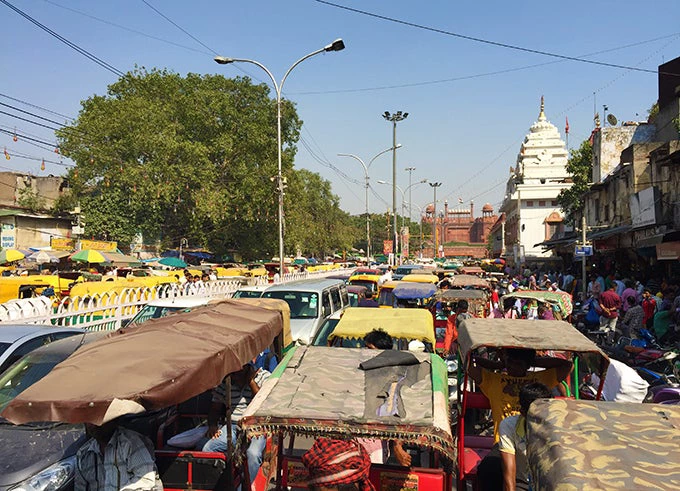
As an intrinsically-optimistic Brazilian, my new assignment following India’s economy suits me well: India is one of the few bright spots in a somber global economy and is set to become the fastest growing large economy in the world. Our recently-released India Development Update projects India’s GDP will grow by 7.5 percent in the fiscal year ending March 2016, and by 7.8 and 7.9 percent in the following two years. Not quite the double-digit growth the Government would like to see, and to be sure there are significant uncertainties about the outlook, but an enviable state of affairs nonetheless.
What is driving the favorable momentum?
The drastic decline in global crude oil prices since June 2014 clearly played an important role. As a net oil importer, the halving of oil prices has been a bonanza for India. External vulnerabilities were greatly reduced as the lower oil import bill shrank the current account deficit despite anemic exports. Lower oil prices also helped contain prices of global commodities, and along with the RBI’s prudent monetary policy led to a significant decline in inflation. This in turn boosted real incomes in urban areas and allowed RBI to lower policy rates by a cumulative 125 basis points in the first nine months of 2015.
A Brazilian sports commentator used to say that good luck is a combination of opportunity and ability. It’s important to recognize both the good fortune of receiving a perfect ball, but also the striker’s skill in finishing the play into the net (I hope Indian readers will forgive the football analogy and help me translate this into cricket?).
We noted the RBI’s skillful conduct of monetary policy in response to the ‘taper tantrum’ of 2013. Lower oil prices were certainly helpful in containing inflation, but the RBI’s choice to kept rates unchanged even as inflation started declining sent real rates into positive territory and reinforced the monetary authority’s intention to meet its inflation target. On the fiscal policy front, the Government seized the opportunity not only to eliminate subsidies on motor fuel, but to raise excise taxes as well. This was a triple win: for the budget (allowing for a lower fiscal deficit and higher capital expenditures), the environment (through lower emissions), and equity (since the average government expenditure is likely better targeted than regressive fuel subsidies).
In an interesting piece (unfortunately not publicly available on the web), JP Morgan economists Sajjid Chinoy and Toshi Jain dig deeper and attempt to quantify the magnitude of the oil windfall to the Indian economy. They estimate that India benefited from a 2.1 percent of GDP terms-of-trade shock over the last four quarters, two-thirds of which have been spent, which implies a 1.3 percentage-point fillip to GDP growth in the previous four quarters. With oil prices stabilizing, only 0.8 percent would be left to lift growth in the coming six months and half of those savings are with the corporate sector, which may be reluctant to spend given the need to repair balance sheets.
While I largely agree with their analysis, there’s one kink: although the Centre’s fiscal deficit is only expected to decline by 0.1 percentage points of GDP, the Centre actually plans to ‘save’ 0.6 percent of GDP this fiscal year. Why is that? As noted in Chapter 2 of the Development Update, following the implementation of the recommendations from the Fourteenth Finance Commission, net transfers to the states are expected to increase by 0.5 percentage points of GDP this fiscal year, much of which in untied funds. Netting out the 0.1% of GDP that Chinoy and Jain estimate the states lose from lower ad-valorem taxes on fuel products that amounts to net additional resources of 0.4 percent of GDP transferred to the states.
A key question, therefore, is whether state governments are saving or spending these additional resources (and if spending, how much on capital vs. current expenditures). It is possible – if unlikely – that the government (center and states) is saving a full 0.5 percent of GDP, which along with Chinoy and Jain’s estimates of household and corporate savings would imply a 50/50 split between saving and spending of the oil windfall, and a greater role of non-oil factors in the economy’s recent growth.
The point I want to make is not about a specific estimate. With 57 percent of public spending in India estimated to be taking place at the state level in the current fiscal year, developing a better understanding of state public finances is key to understand fiscal policy, as well as the implications of the decentralization reforms for service delivery and poverty reduction.
That is indeed one of my next tasks as I continue to learn more about this fascinating country. Indian readers may be able to help me in that endeavor (in addition to helping me learn about cricket): What do you think your state is doing with the additional resources it is receiving from the Centre this year?
Originally published in Economic Times online on 17 November 2015.


Join the Conversation